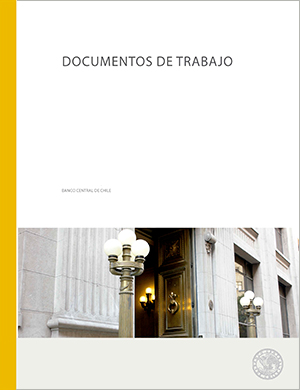Working Papers N° 882: Corporate-Sector Functional Currency: An International Comparison
Publications
Working Papers N° 882: Corporate-Sector Functional Currency: An International Comparison
Autor: Jorge Fernández B. , Fernando Pino M. , Francisco Vásquez L.
Description
Since 2012, Chile’s corporate debt has increased as a percentage of GDP, mainly explained by external debt, high even relative to comparable countries. This dynamic owes mainly to firms that use the U.S. dollar (USD) as their functional currency in their financial statements, so for these firms dollar-denominated debt does not generate a currency mismatch in their balance sheets. This paper studies the relevance of firms with the USD as their functional currency using a cross-country comparison at the asset level of the corporate sector. Our results show that the case of Chile is not isolated as, for example, Canada, Norway, Israel, Australia, and Peru exhibit an important share of firms with this characteristic. We also find that Chile is the country with the highest proportion of firms with dollar accounting with respect to GDP (64% in 2017). In addition, these countries share a common factor, since these companies’ assets are concentrated in economic sectors oriented towards international trade. In Chile the importance of these sectors, like Basic Materials, Forestry and paper, and Mining, explains the high proportions of firms with USD as their functional currency. These conclusions are important to consider when analyzing a country's external debt and the potential exchange rate risks, such as currency mismatch, due to the effect of dollar debt in the balance sheet. During depreciations, it has been a concern among Latin-American firms, especially during the emerging-market financial crises of the 1990s.
Working Papers N° 882: Corporate-Sector Functional Currency: An International Comparison
Boxes and graphics

